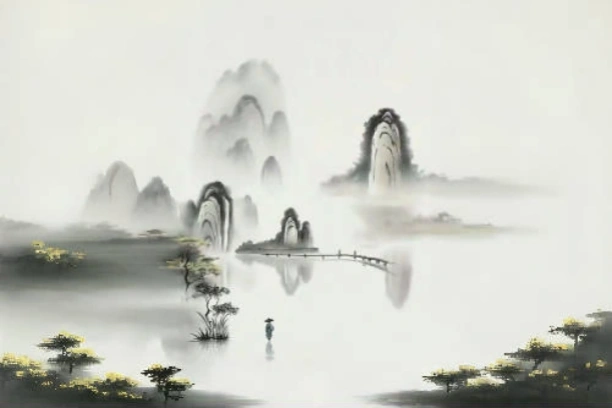
The door of Ch’an is entered by Wu. When we meditate on Wu we ask “What is Wu?” On entering Wu, we experience emptiness; we are not aware of existence, either ours or the world’s.
E-MAIL: admin@relaxmid.com

In the spring of 1987, I held a retreat at Morgan’s Bay, a Zen community in Surry, Maine. For four evenings I talked about the path of Zen, or Ch’an, practice, using the Ten Ox Herding Pictures as a model. My talks were informal and spontaneous, geared primarily to help the retreat participants overcome obstacles they faced in their practice. Four evenings is not a long time to spend discussing such an important work, but the participants told me that they found the talks to be valuable. They wished for the lectures to be transcribed and edited, and since they offered to do it, I gladly agreed.
The ox herding pictures provide an analogy to help explain the process of Ch’an practice. The ever-watchful, ever-patient ox herder is a model for Ch’an practitioners, who should constantly watch their minds of vexation, and who should not be influenced by the external environment.
Many versions of the ox herding pictures exist. During the T’ang dynasty (618-906), Master Pai-chang used the ox herding analogy, and later, Master Nan-ch’uan P’u-yuan and Shih-kung Hui-tsan, who were disciples of Master Ma-tzu, used similar analogies with buffaloes in place of oxen. The most popular version, however, is attributed to K’uo-an Shih-yuan, who was a Lin-chi (Rinzai) master during the Sung Dynasty
(960-1279). His version can be found in chapters forty-six and forty-seven of the Extended Arguments. The ox herding analogy is also found in volume two of the sastra of the Great Wisdom of the Paramitas. Furthermore, in the Bequeathed Teachings of the Buddha, there is a saying that one should not be lax in one’s effort. One should be like the person who herds an ox: always vigilant.
Other versions of the ox herding pictures exist. There is a version with five pictures, another with six, still another with eight. I will use the most common and popular version ─ Master K’uo-an Shih-yuan’s Ten Ox Herding Pictures. In the original version, four lines of verse accompany each of the ten pictures. I will not discuss the meaning of the words. Instead, I will comment directly on the meaning of the pictures.
The numerous versions of the ox herding pictures are highly regarded by practitioners in China and Japan, and more recently, in the West. Renditions in English can be found in Zen Flesh, Zen Bones, transcribed by Nyogen Senzaki and Paul Reps, and in The Three Pillars of Zen, compiled and edited by Roshi Philip Kapleau. Two versions appear in D.T. Suzuki’s Manual of Zen Buddhism. In the latter version, which is by an unknown author, the ox gradually whitens until it completely disappears, ending with a blank circle. There is also a book on the teachings of Zen master Dogen, in which the author, Francis Dojun Cook, adopts the analogy for his book’s title: How to Raise an Ox.
The ox herding pictures are profound in meaning and wisdom, so one needn’t worry that there are too many commentaries. Perhaps my approach is somewhat different from those of others. Whether it is or isn’t does not matter. I hope only that this commentary is of value to readers and practitioners.
PREVIOUS: Acknowledgement | Ox Herding at Morgan’s Bay
NEXT: Introduction | Ox Herding at Morgan’s Bay
